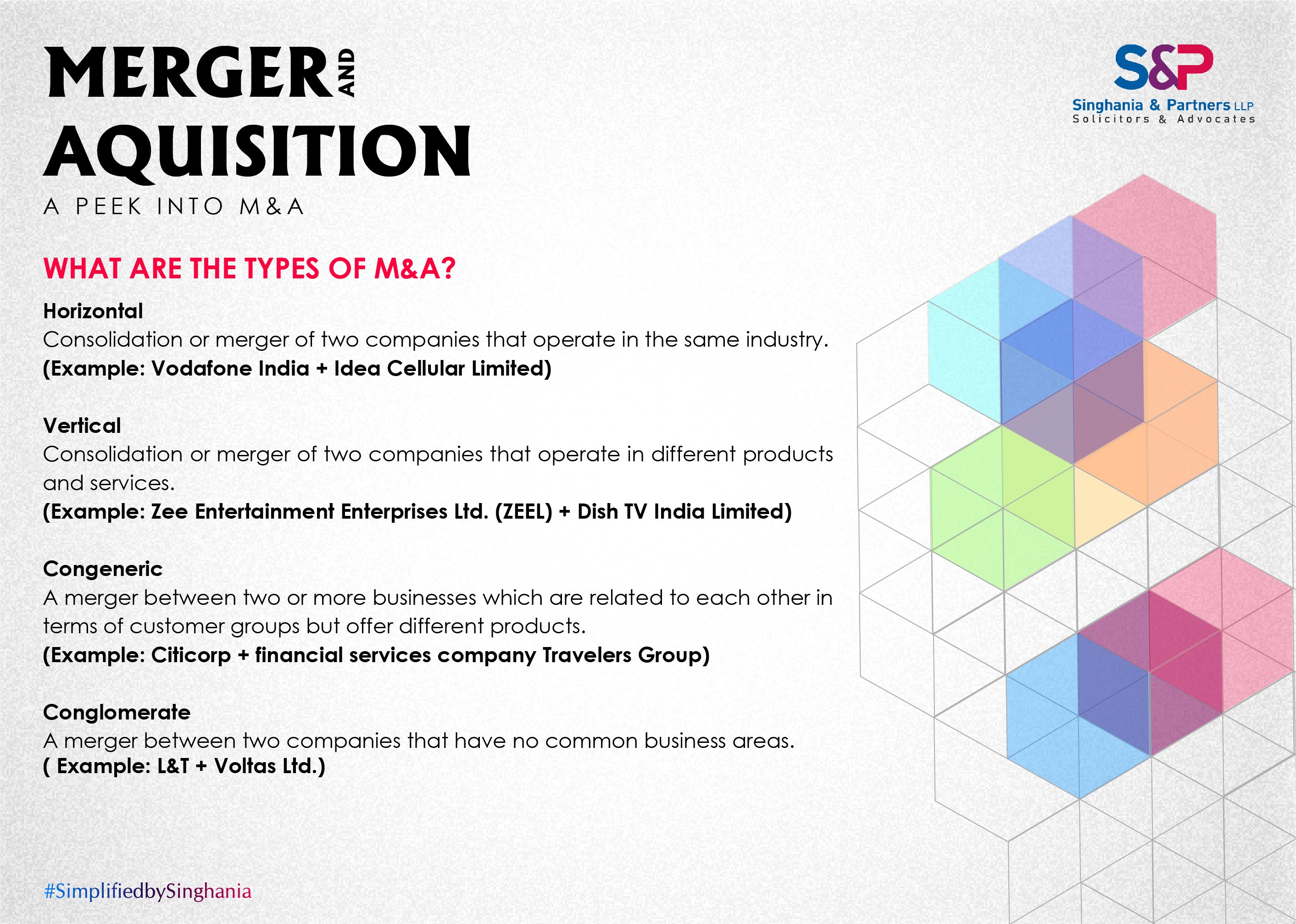- within Energy and Natural Resources, Antitrust/Competition Law and Intellectual Property topic(s)
- with readers working within the Aerospace & Defence, Law Firm and Construction & Engineering industries

How do acquiring companies approach the M&A procedure when they are focusing on growth and enhancing their market position? This article sheds a light on various types of Mergers and Acquisitions with emblematic examples. It will help to form development strategies to mark their potential target in the market. One of the most well-known ways to grow business, either nationally or internationally, is through mergers and acquisitions (M&A). Simply put, it occurs when two businesses merge. M&A is a phrase that refers to the combination of either businesses or assets adding complexity.
It is anticipated that the mergers will provide "synergies." In essence, this means that the two businesses will function more effectively as a single entity, with the larger corporation profiting from the expansion of assets and supply chain activities. It all comes down to putting together something bigger than the sum of its parts.
Now, we will look at some of the most common types of mergers that fall under the M&A category:
Horizontal Merger
This is the most common type of merger, it happens when companies operating at the same level of the value chain (selling similar products and providing similar services) are direct competitors of each other come together to target a larger market and merge in order to dominate aiming to build higher economies of scale by decreasing market competition.
An example is the acquisition of UberEats by Zomato, where one
food delivery business acquired the other dealing exactly at the
same level of the value chain.
Another example could be, acquisition of Bhushan Steel by Tata
Steel.
Two businesses that compete in the same market, merge to create an entity with a "supersized" market share. Increasing the market share and integrating key processes, such as manufacturing, may help to lower overall operating costs. It's an excellent approach for smaller businesses to access markets in other nations that might not have been previously accessible.
Vertical Merger
A vertical merger occurs when companies in the same market operate in different stages of production. This type of merger cuts costs and boosts efficiency across the supply chain, but in business, it reduces flexibility and may also create new complexities.
Imagine a scenario where a cotton supplier supplied cotton to a textile manufacturer for many years. They realized that their merger could result in reduced costs and an increase in profits. These two entities if merged would be termed as a 'vertical merger'.
An example can be the merger where both entities are at different levels of the production/supply chain would be Zee Entertainment Enterprises Limited Ltd. (ZEEL), a broadcaster, with Dish TV India Limited, a distribution platform operator.
Sometimes, these will be two businesses that aren't technically rivals, but joining forces makes practical sense. For instance, a car manufacturer and a components supplier might join so that their shared operations can be carried out in close proximity and with more visibility. The cost of parts is better managed by the automaker, while the parts supplier benefits from a steady flow of customers.
Congeneric Merger
A congeneric merger (also referred to as a 'concentric acquisition' or 'product extension merger') is a type where companies operate in related business segments offering different products or complementary products and have similar target customers. The merging companies can also be indirect competitors.
The key idea for value creation here is that both companies can create significant cross-selling opportunities through a merger.
An example of this type of merger can be the acquisition of Zomato by Grofers. Both entities are in service to supply food products. The only difference is that Grofers provides raw material and Zomato delivers cooked food. They have similar target audiences.
Conglomerate Merger
A conglomerate merger is a merger between companies whose businesses and industries are entirely different from each other. The aim of this merger is to achieve a big size company. There are almost zero synergy benefits for conglomerate mergers but there is an opportunity for business risk diversification . It can be especially challenging to integrate dissimilar companies, raising the risk of culture clashes and lost efficiency due to disrupted business operations.
A famous example of this type of merger is the merger between the Walt Disney Company and the American Broadcasting Company. Ultimately, mergers like this can be about portfolio diversification. When a product or sector performs poorly, it is hoped that other products or sectors can make up for the losses.
Conclusion
Fundamentally, an acquisition is simply a transaction in which one company purchases another. But as this article shows, this trading can take many basic forms and motives. In the upcoming articles in our series of M&A, we shall focus on the stages of Mergers to understand processes from planning to valuation to integration.
The content of this article is intended to provide a general guide to the subject matter. Specialist advice should be sought about your specific circumstances.


